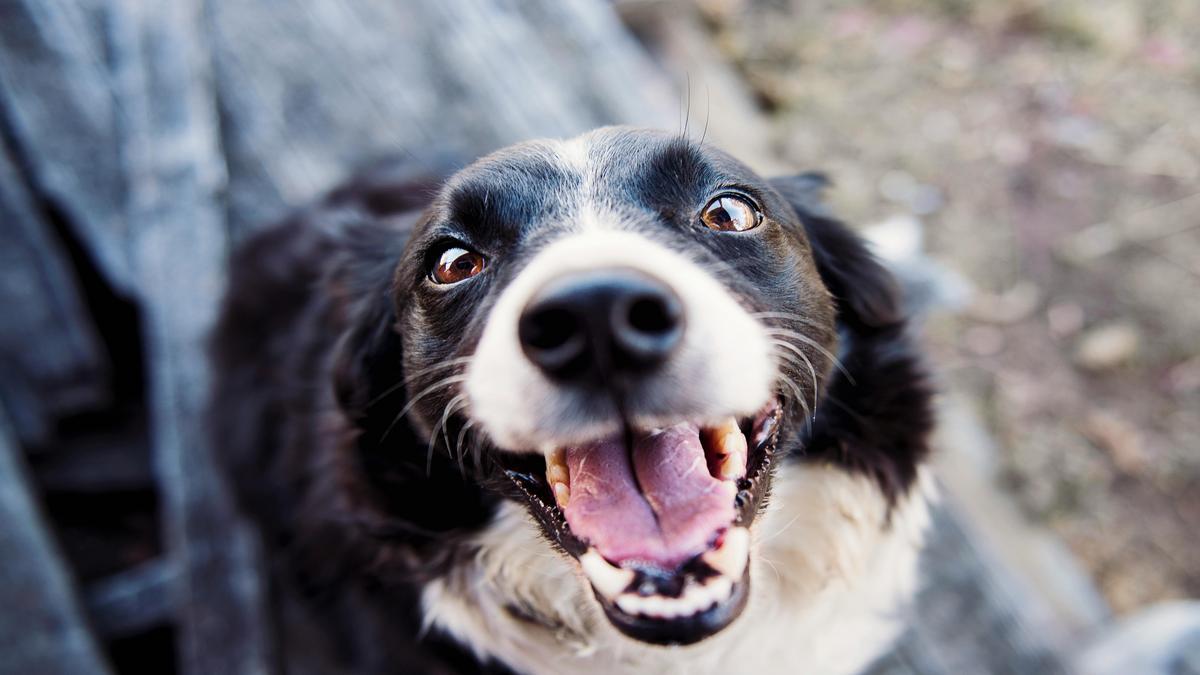Individual Personalities: Recognizing and Understanding Your Dog’s Quirks
Have you ever wondered why your furry friend acts a certain way? Understanding individual personalities in dogs can help you decode their behavior. From tail wagging to ear position, each canine has their unique traits. By recognizing your dog’s quirks, you can build a stronger bond and provide tailored care. Learn to communicate effectively, establish trust, and create a positive environment for your four-legged companion. Embrace the journey of exploring your dog’s personality and watch your relationship flourish.
Key Takeaway
- Observe your dog’s behavior closely
- Tailor your training approach to your dog’s personality
- Provide activities that cater to your dog’s preferences
- Be patient and understanding with your dog
- Celebrate and embrace your dog’s unique quirks

Canine Personality Traits
Understanding Your Dog’s Unique Characteristics
When it comes to understanding your furry friend, it’s essential to recognize that each dog has its own set of individual personality traits. By navigating through these unique characteristics, you can unveil the secrets behind your dog’s behavior. Here are some tips to help you decode your canine companion’s quirks:
- Observe: Take the time to observe your dog’s behavior in different situations. Pay attention to how they react to various stimuli and interact with other dogs or humans.
- Communicate: Dogs communicate through body language, so pay attention to their posture, facial expressions, and tail wagging. This can give you insight into how they are feeling.
- Consistency: Dogs thrive on routine and consistency. By establishing a regular schedule for feeding, exercise, and playtime, you can help your dog feel secure and understood.
Identifying Breed-Specific Traits
Different dog breeds have distinct temperaments and characteristics that are tailored towards their historical roles. By exploring these breed-specific traits, you can gain a better understanding of your dog’s behavior. Here is a table highlighting some common breeds and their typical temperaments:
| Breed | Temperament |
|---|---|
| Labrador Retriever | Friendly, Energetic |
| German Shepherd | Loyal, Protective |
| Poodle | Intelligent, Playful |
| Bulldog | Calm, Courageous |
| Beagle | Curious, Affectionate |
Exploring Different Breeds’ Temperaments
Each breed has its own set of traits that shape their behavior. By learning about these temperaments, you can better understand why your dog acts the way they do. Embrace the diversity in the canine world and celebrate the unique characteristics that make your dog special.
Emotional Intelligence in Dogs
Recognizing Your Dog’s Feelings
Understanding your dog’s emotions is crucial for building a strong bond with your furry friend. Dogs have a remarkable ability to express their feelings through body language and vocalizations. Here are some key indicators to help you recognize your dog’s emotions:
- Tail Wagging: Contrary to popular belief, a wagging tail doesn’t always mean a happy dog. The speed, height, and direction of the wag can convey different emotions.
- Ear Position: Pay attention to your dog’s ear position. Ears held high indicate alertness or aggression, while ears pinned back suggest fear or submission.
Interpreting Canine Body Language
Dogs communicate primarily through body language. By observing your dog’s posture and movements, you can gain valuable insights into their state of mind. Here are some common body language cues to look out for:
| Body Language | Meaning |
|---|---|
| Tail tucked | Fear or submission |
| Hackles raised | Aggression |
| Play bow | Invitation to play |
| Yawning | Stress or discomfort |
Understanding Tail Wagging and Ear Position
Tail wagging is a complex form of communication in dogs. While a high wag usually signifies excitement or happiness, a low wag may indicate insecurity or fear. Similarly, ear position can reveal a lot about your dog’s emotional state.
In conclusion, by paying close attention to your dog’s body language and vocal cues, you can better understand their emotions and strengthen your bond with them.

Dog Behavior Analysis
Decoding Your Dog’s Actions
Understanding your furry friend’s behavior is crucial for building a strong bond and ensuring a harmonious relationship. By paying attention to your dog’s actions, you can decipher what they are trying to communicate. Here are some common behaviors and what they might mean:
| Behavior | Possible Meaning |
|---|---|
| Tail Wagging | Excitement or Happiness |
| Barking | Alerting you to something or Expressing their needs |
| Pawing at you | Seeking Attention or Affection |
| Rolling on their back | Submissiveness or Playfulness |
| Growling | Sign of Aggression or Fear |
Recognizing Stress Signals
Dogs can exhibit various stress signals when they are feeling anxious or uncomfortable. It’s essential to be able to identify these signs to help your dog feel safe and secure. Some common stress signals include:
- Pacing or restlessness
- Excessive panting
- Lip licking
- Yawning when not tired
- Avoiding eye contact
Identifying Aggression vs. Playfulness
It’s crucial to differentiate between aggression and playfulness in your dog’s behavior to ensure a safe environment for everyone. Here are some key differences to look out for:
| Aggression | Playfulness |
|---|---|
| Stiff body, raised fur, showing teeth | Relaxed body, wagging tail |
| Growling or snarling | Bouncy movements, inviting play |
| Direct eye contact, ears pinned back | Play bow, relaxed facial expression |
Animal Communication Techniques
Establishing Trust with Your Dog
Building a strong bond with your furry friend is essential for effective communication. To establish trust with your dog, it’s crucial to be consistent in your interactions and always show affection. Here are some tips to help you build trust with your canine companion:
- Be Patient: Dogs, like humans, need time to build trust. Be patient and give your dog the space they need to feel comfortable around you.
- Use Positive Body Language: Dogs are experts at reading body language. Use open and friendly gestures to show your dog that you mean no harm.
- Reward Good Behavior: When your dog displays good behavior, reward them with treats or praise. This positive reinforcement will strengthen your bond and build trust.
Using Positive Reinforcement
Positive reinforcement is a powerful tool in training your dog and improving communication. By rewarding good behavior, you encourage your dog to repeat that behavior in the future. Here are some ways to use positive reinforcement effectively:
- Clicker Training: Using a clicker to mark desired behavior can help your dog understand what they are being rewarded for.
- Treats and Affection: Reward your dog with treats, toys, or affection when they exhibit the behavior you want to reinforce.
- Consistency is Key: Be consistent in your use of positive reinforcement to help your dog understand what is expected of them.
Communicating Through Training
Training is not just about teaching your dog commands; it’s also a way to communicate effectively with them. Through training, you can establish rules and boundaries, making it easier for your dog to understand what you expect from them. Here are some tips for effective communication through training:
| Training Tip | Description |
|---|---|
| Use Clear Commands | Use simple, consistent commands to communicate with your dog. |
| Stay Calm and Patient | Dogs respond better to calm, patient training sessions. |
| Practice Regularly | Consistent training sessions help reinforce good behavior and improve communication with your dog. |

Canine Attitude Assessment
Evaluating Your Dog’s Response to Situations
When it comes to understanding your furry friend’s behavior, it’s essential to evaluate how they respond to different situations. Dogs, like humans, have individual personalities that shape their reactions. Here are some key indicators to look out for when assessing your dog’s attitude:
| Behavior | Possible Meaning |
|---|---|
| Tail wagging rapidly | Excitement or happiness |
| Ears pinned back | Fear or anxiety |
| Growling or showing teeth | Aggression or discomfort |
| Cowering or hiding | Stress or feeling threatened |
| Relaxed body posture | Contentment or relaxation |
By observing these behaviors, you can gain insight into how your dog perceives the world around them. This awareness will help you tailor your interactions to suit their needs and build a stronger bond.
Recognizing Fear or Anxiety
Dogs can experience fear or anxiety in various situations, from loud noises to meeting new people. It’s crucial to recognize these emotions to provide support and help your pet feel safe. Here are some signs that your dog may be feeling fearful or anxious:
- Trembling or shaking
- Excessive panting
- Pacing or restlessness
- Avoidance behavior
- Excessive drooling
Building Confidence in Your Pet
Building confidence in your dog is vital for their overall well-being. A confident dog is more likely to navigate the complexities of the world with ease and resilience. Here are some tips to help boost your pet’s confidence:
- Positive reinforcement: Praise and reward good behavior.
- Training: Teach new commands and tricks to build skills.
- Socialization: Expose your dog to different environments and people.
- Exercise: Regular physical activity can boost confidence levels.
- Consistency: Establish a routine to provide a sense of security.
By empowering your dog and helping them feel more self-assured, you can unlock their full potential and strengthen your bond.
Personality Profiling in Pets
Understanding Your Dog’s Preferences
When it comes to understanding your dog’s preferences, it’s essential to pay attention to their likes and dislikes. Just like humans, dogs have individual personalities that shape their behavior and preferences. By observing your furry friend closely, you can start decoding their unique traits and preferences.
Here are some key areas to focus on when trying to understand your dog’s preferences:
| Preference | Observation |
|---|---|
| Food | Does your dog prefer certain types of food or treats? |
| Toys | What types of toys does your dog enjoy playing with the most? |
| Sleeping habits | Where does your dog prefer to sleep? On a bed, couch, or the floor? |
| Social interactions | Does your dog enjoy playing with other dogs or prefers human company? |
| Exercise | What activities make your dog the happiest? Running, fetching, or swimming? |
By meticulously observing your dog’s behavior in these areas, you can start to unveil the secrets of their preferences and tailor their environment to suit their needs.
Identifying Play Styles
Understanding your dog’s play style is crucial for building a strong bond and keeping them mentally stimulated. Dogs have different ways of playing, and identifying your dog’s unique play style can help you engage with them more effectively.
Here are some common play styles that dogs exhibit:
- Chaser: Enjoys chasing after toys or other dogs.
- Tugger: Loves playing tug-of-war with ropes or toys.
- Fetcher: Enjoys fetching balls or Frisbees.
- Explorer: Likes to sniff around and explore new environments.
- Wrestler: Enjoys rough play with other dogs or humans.
By recognizing your dog’s play style, you can design a tailored enrichment plan that includes activities they enjoy the most.
Creating a Tailored Enrichment Plan
Once you have identified your dog’s preferences and play style, it’s time to create a tailored enrichment plan to keep them happy and engaged. This plan should include a mix of physical exercise, mental stimulation, and social interaction to cater to all aspects of your dog’s well-being.
Here are some ideas for creating a tailored enrichment plan for your furry friend:
- Daily walks to provide physical exercise and mental stimulation.
- Interactive toys that challenge your dog’s problem-solving skills.
- Training sessions to keep their mind sharp and build a stronger bond with you.
- Playdates with other dogs to fulfill their social needs.
By navigating your dog’s preferences and play style, you can create a bespoke enrichment plan that is designed to enhance their overall quality of life.
Frequently asked questions
How can I recognize my dog’s individual personalities?
Pay attention to their behavior, likes, and dislikes. Each dog has unique quirks that make them special.
Why is it important to understand my dog’s individual personalities?
Understanding your dog’s quirks can help you communicate better with them and build a stronger bond.
What are some common quirks I may notice in my dog?
Some dogs may be more energetic, while others may be more laid-back. Some may be outgoing, while others may be shy. Each dog is different!
How can I adapt to my dog’s individual personalities?
Tailor your training methods, exercise routines, and interactions based on your dog’s unique quirks. This will help create a harmonious relationship.
What should I do if I don’t understand my dog’s quirks?
Seek guidance from a professional dog trainer or behaviorist who can help you decode your dog’s behaviors and provide personalized advice.

